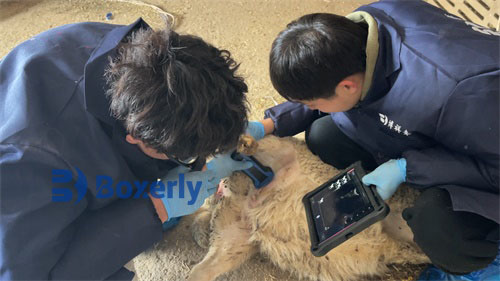Pig B-ultrasound is used to analyze the reasons for sow conception failure. The main characteristic of conception failure is that sows often return to estrus regularly (i.e., 18-24 days after mating). The conception rate (non-return rate) of breeding pigs should be at least 90%. If the return rate exceeds 10%, it indicates that abnormal conditions may occur. Pig conception failure indicates that the egg may not meet the sperm at the right time to complete fertilization, which may cause complete conception failure (i.e., regular return to estrus) or partial conception failure (reduced litter size). It is necessary to use pig B-ultrasound to analyze this disease.
Mating time: On average, pigs ovulate 36-44 hours after the start of standing estrus. The life span of the egg after ovulation is limited and must be in contact with sperm as soon as possible after ovulation. This time limit is basically within 8 hours. Sperm can survive in the reproductive tract of sows for 40 hours. If the mating time is inappropriate, it will lead to complete conception failure or partial conception failure (i.e., reduced litter size). Therefore, the best time for pigs to breed is on the day of standing estrus, at least once after 18-24 hours, or use pig ultrasound to observe the follicles of the sows before breeding.
Pig ultrasound training site
If sows return to estrus regularly after breeding, the quality of semen must be considered. For example, it should be considered whether this problem occurs in a specific pig group (such as parity, lactation period, weaning to estrus interval, breeding date or breeding method), all of which are related to pregnancy rate. After that, the daily breeding method should be carefully studied. The following issues should be noted: whether the size, shape, structure and ground conditions of the breeding room are appropriate; whether breeding monitoring is carried out (such as using pig B-ultrasound for observation); whether boars are rotated for breeding, or some boars are over-bred; whether the semen quality is reliable; whether the reproductive health status of boars is satisfactory; whether the health status of sows is satisfactory; whether there is sufficient time for estrus identification; whether there is enough light during estrus identification; when is the sow bred after the onset of estrus; what breeding method is used, and whether it is more reliable to breed after pig B-ultrasound observation.








